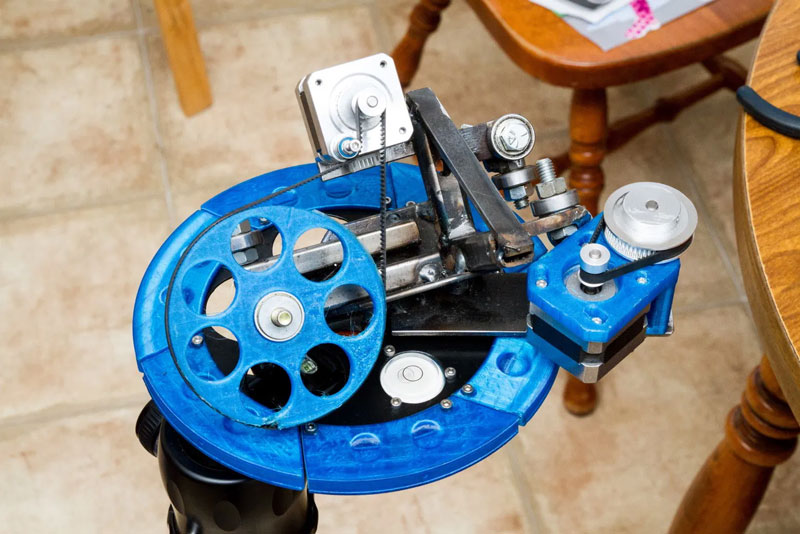Timelapse rigs are awesome because you can spice up your videos with more interesting panning and tilting timelapse shots. So, why not build yourself one? That’s what [td0g] decided to do, and the result is IREnE, a rather nice homemade 3DOF rig that fits onto a standard tripod. 3DOF means that it has three degrees of freedom: the camera can be rotated on the tripod, moved linearly on an extending arm away from the tripod head and rotated around its own axis. In other words: it can pan past an object while rotating the camera to keep the object centered in the frame.
IREnE stands for Inverted Radial Extension Eggtimer, a play on the dual radial nature of the device and how photographers use egg timers for this sort of thing. It’s also a sneaky tribute to a foe of Sherlock Holmes. The rig is driven by three NEMA 17 motors and an ATMega328p, all powered by a Dewalt powertool battery and his own DeWatt power adapter. the rig also has a secondary function with minor modifications as a pancake printer.
Breakfast aside, there are a few caveats to this project. While a tripod is fine for stabilizing a camera on the top of it, offsetting the weight like this makes the tripod unstable. [td0g] did add a few welded stabilizer bars that brace it to more stable, but the whole thing should be used with some caution. The camera sits on a 1-inch square aluminium extruder that [td0g] claims is robust enough to hold his Canon D7, but I am not sure I would trust it with my expensive equipment.
This is the fifth high-quality build we have seen from [td0g]: we previously covered the excellent high-speed LED flash, great telescope mount, high-speed chronograph, and wood-burning ATX power supply hack.
















Maybe I haven’t had enough coffee yet, but I just read the article and watched the video and had no sense of what the devices axis of motion were. This picture on the project web page was far more informative.
https://i0.wp.com/td0g.ca/wp/wp-content/uploads/2019/11/irene_042-2.jpg
+1
That’s a very long extension axis; I’d be surprised if it can remain stable on extension without significant weighting on the tripod, particularly with the rotation meaning the CoG isn’t moving on a straight line.
Tripods aren’t made to take this type of load, which is why most longer sliders use a rail supported at both ends.
A counterbalance might resolve stability issues?
Interestingly, the tendency now is for shorter sliders, as apparently the normal length of slide which makes it into the final cut is only about 6”, or at least that’s one manufacturer’s claim.